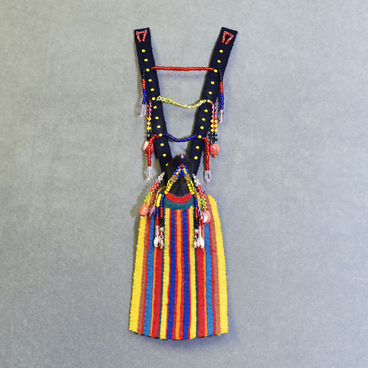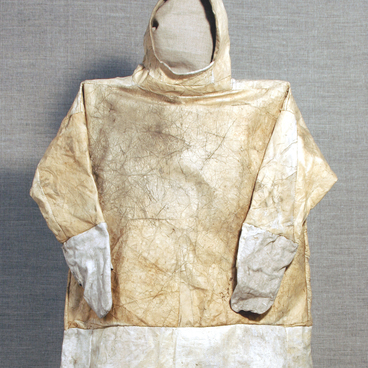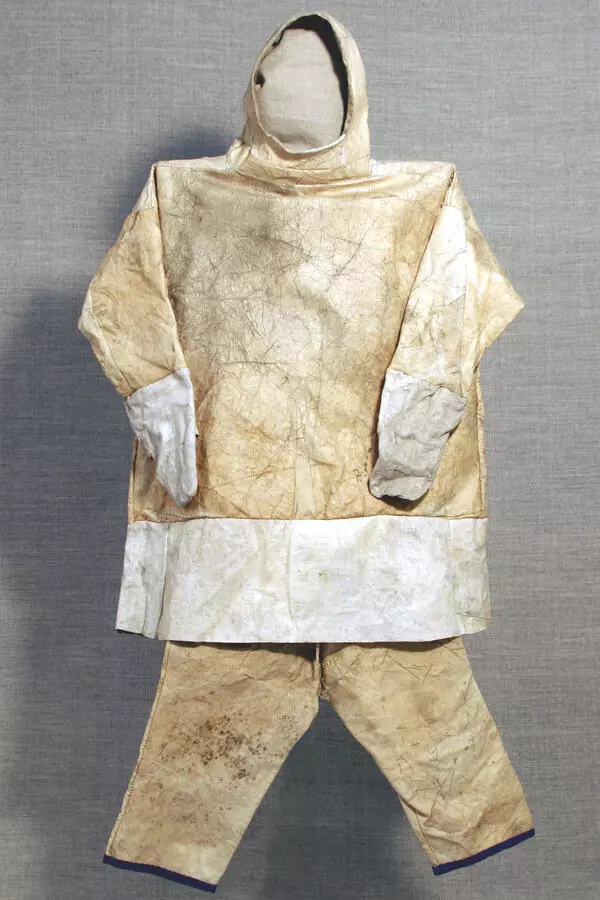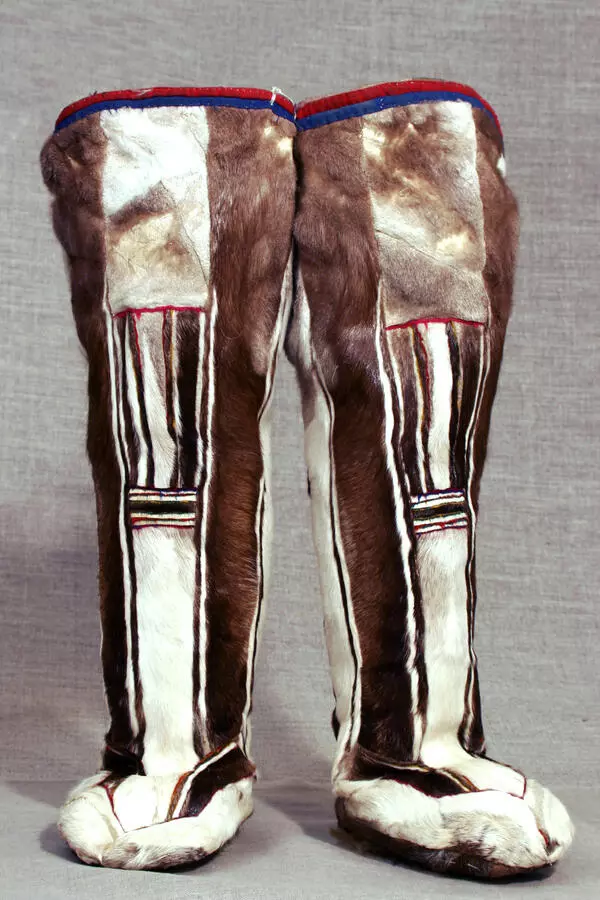The Forest Nenets, small indigenous peoples of the North, still preserve their traditional outfit and footwear which are adapted to their nomadic way of life and climate conditions of the territory they inhabit. Due to unique design and tailoring, this clothing protects from cold even during most severe winters. Unlike winter fur boots, male summer footwear is made of rOvduga, reindeer suede. The process of its preparation is not easy: first, a reindeer pelt is soaked in water, then fur is plucked out, undercoat cleared with a scraper. Before processing the other side of the pelt, it is dried and rubbed with birch dust. It improves durability and softness of the pelt.
Traditionally, only women are engaged into sewing, it is one of their main duties. The NEnets women use special threads made of reindeer tendon instead of manufactured ones. These threads are very strong, which makes the footwear snow and waterproof and utterly durable. The Forest Nenets women like threads made of female reindeer back tendons most, because they are easier to separate into fibers. These threads are usually used for clothing. Reindeer front legs tendon threads are used for a chum roof covers and summer boots, as they are thicker and more practical than those from the back of a reindeer. Before sewing, threads are moisturized to make them elastic. After they get dry, they tighten a seam and make it stronger.
Summer boots consist of three parts: a vamp, a toe cap and a shaft. A vamp is bent up in folds, a cap and a shaft are stitched on to it. Special loops made of rOvduga are sewed into this seam, three at each side. A strap running through these loops tightly fixes the boots on the feet. A sole is cut out of a piece of kAmus, reindeer legs skin. KAmus pile is always directed downward, so that water drains from it without lingering on the sole, thus extending the life of the boots.
Male summer footwear in the museum exposition was provided by the Forest Nenets Zinaida Pyak, a Dyanki-Koy camp resident.
Traditionally, only women are engaged into sewing, it is one of their main duties. The NEnets women use special threads made of reindeer tendon instead of manufactured ones. These threads are very strong, which makes the footwear snow and waterproof and utterly durable. The Forest Nenets women like threads made of female reindeer back tendons most, because they are easier to separate into fibers. These threads are usually used for clothing. Reindeer front legs tendon threads are used for a chum roof covers and summer boots, as they are thicker and more practical than those from the back of a reindeer. Before sewing, threads are moisturized to make them elastic. After they get dry, they tighten a seam and make it stronger.
Summer boots consist of three parts: a vamp, a toe cap and a shaft. A vamp is bent up in folds, a cap and a shaft are stitched on to it. Special loops made of rOvduga are sewed into this seam, three at each side. A strap running through these loops tightly fixes the boots on the feet. A sole is cut out of a piece of kAmus, reindeer legs skin. KAmus pile is always directed downward, so that water drains from it without lingering on the sole, thus extending the life of the boots.
Male summer footwear in the museum exposition was provided by the Forest Nenets Zinaida Pyak, a Dyanki-Koy camp resident.





